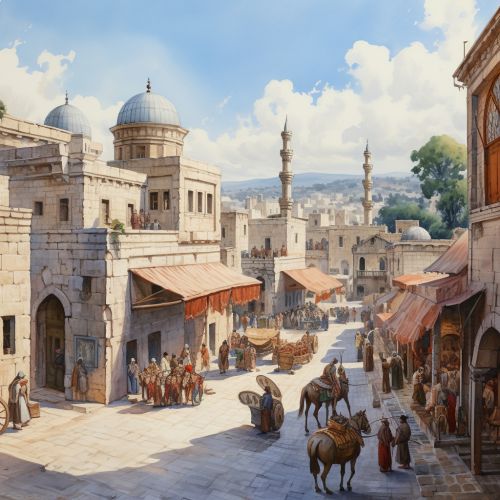Paul the Apostle
Early Life
Paul the Apostle, originally known as Saul, was born in the city of Tarsus, located in modern-day Turkey. He was a Roman citizen from birth, a privilege he inherited from his father. Saul was brought up in a devout Jewish family that followed the Pharisee sect of Judaism, which was known for its strict adherence to Jewish law and traditions.


Saul was sent to Jerusalem to study under the famous rabbi Gamaliel, a leading authority in the Sanhedrin in the mid-first century. Under Gamaliel's tutelage, Saul became well-versed in the scriptures and the laws of Judaism.
Conversion to Christianity
Saul was a zealous persecutor of the early Christian church, as documented in the Book of Acts. However, his life took a dramatic turn on the road to Damascus, where he experienced a vision of the resurrected Jesus Christ. This event, often referred to as the "Damascus Road experience", led to Saul's conversion to Christianity.
After his conversion, Saul adopted the name Paul, which means "small" or "humble" in Greek. He spent the rest of his life spreading the teachings of Jesus Christ, establishing Christian communities throughout the Roman Empire, and writing letters to these communities that would later become part of the New Testament.
Paul's Missionary Journeys
Paul undertook three major missionary journeys across the Roman Empire, spreading the gospel of Jesus Christ and establishing Christian communities in key cities.
His first journey, accompanied by Barnabas, took him to the island of Cyprus and the regions of Pamphylia, Pisidia, and Lycaonia, all in modern-day Turkey. During this journey, Paul and Barnabas faced opposition from both Jews and Gentiles but also saw many converts.


Paul's second missionary journey, accompanied by Silas, took him through modern-day Turkey and Greece. During this journey, Paul established Christian communities in Philippi, Thessalonica, Berea, Corinth, and Ephesus.
Paul's third missionary journey was primarily focused on revisiting the communities he had established on his previous journeys, strengthening them, and providing further teaching.
Paul's Letters
Paul's letters, or epistles, make up a significant portion of the New Testament. These letters were written to various Christian communities that Paul had established, as well as to his close associates. They provide insight into the challenges faced by early Christians and offer guidance on various aspects of Christian life and doctrine.
Paul's letters can be divided into three categories: the Pauline epistles, the Pastoral epistles, and the Prison epistles. The Pauline epistles, written by Paul, include Romans, 1 and 2 Corinthians, Galatians, Ephesians, Philippians, Colossians, 1 and 2 Thessalonians. The Pastoral epistles, also written by Paul, include 1 and 2 Timothy and Titus. The Prison epistles, written by Paul during his imprisonment in Rome, include Ephesians, Philippians, Colossians, and Philemon.
Death and Legacy
Paul was arrested in Jerusalem and spent two years in prison in Caesarea before being sent to Rome for trial. While the exact details of his death are not known, it is traditionally believed that he was beheaded in Rome under the reign of Emperor Nero.
Paul's influence on Christian theology has been profound. His letters form a significant portion of the New Testament and have been instrumental in shaping Christian belief and practice. His missionary journeys helped to spread Christianity throughout the Roman Empire, laying the groundwork for its growth into a major world religion.
